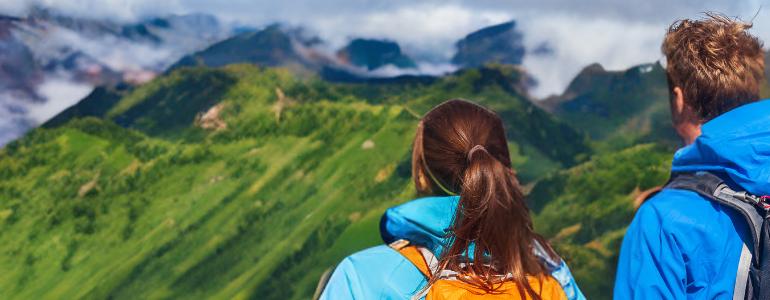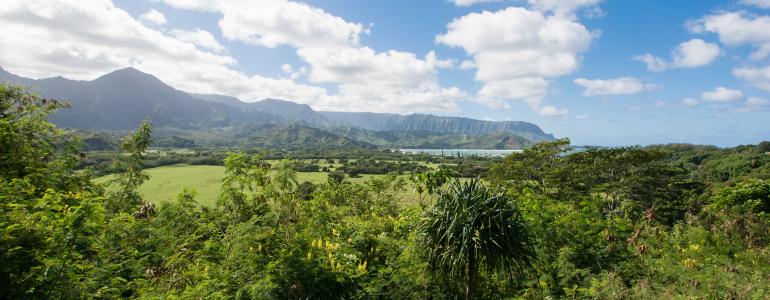The Napali Coast State Park is a must-visit beauty spot on Kauai. The coastal park stretches for about 16 miles along the dramatic northwestern edge of the island. There ultimate way to experience this sacred and stirring place is from a boat sailing along the coast.
Nāpali Coast Sailing: Where Trips Leave From, How to Access, and the Stories Behind the Cliffs
Few coastlines feel as dramatic as Kauaʻi's Nāpali: cathedral-like ridgelines, sea caves lit by shifting sunlight, and valleys that end in sheer walls above aquamarine water. A sailing day here isn't just about stunning scenery; it's also about understanding what the landscape means to the Hawaiian people and how people reached, lived in, and described this coast over the centuries.
Where Sailing Trips Depart From
Most boat and sailing tours head out from Kauaʻi's south-west harbors, with Port Allen (ʻEleʻele). It's home base for several well-known operators offering morning, afternoon, and sunset sails. Check-in is simple, parking is easy, and seas here are typically friendlier in winter than the island's North Shore.
Some companies also stage raft tours from Kikiaola Small Boat Harbor (Kekaha) to shorten the run to the cliffs on days with favorable conditions.
In the summer months, when North Shore swells settle down, a handful of operators switch to Hanalei Bay departures. Hanalei is geographically close to the coast, which means less transit time and more time under the cliffs when conditions allow. These North Shore departures are typically seasonal (roughly May–September) and weather-dependent. The route is convenient when it's calm, but it's not guaranteed year-round.
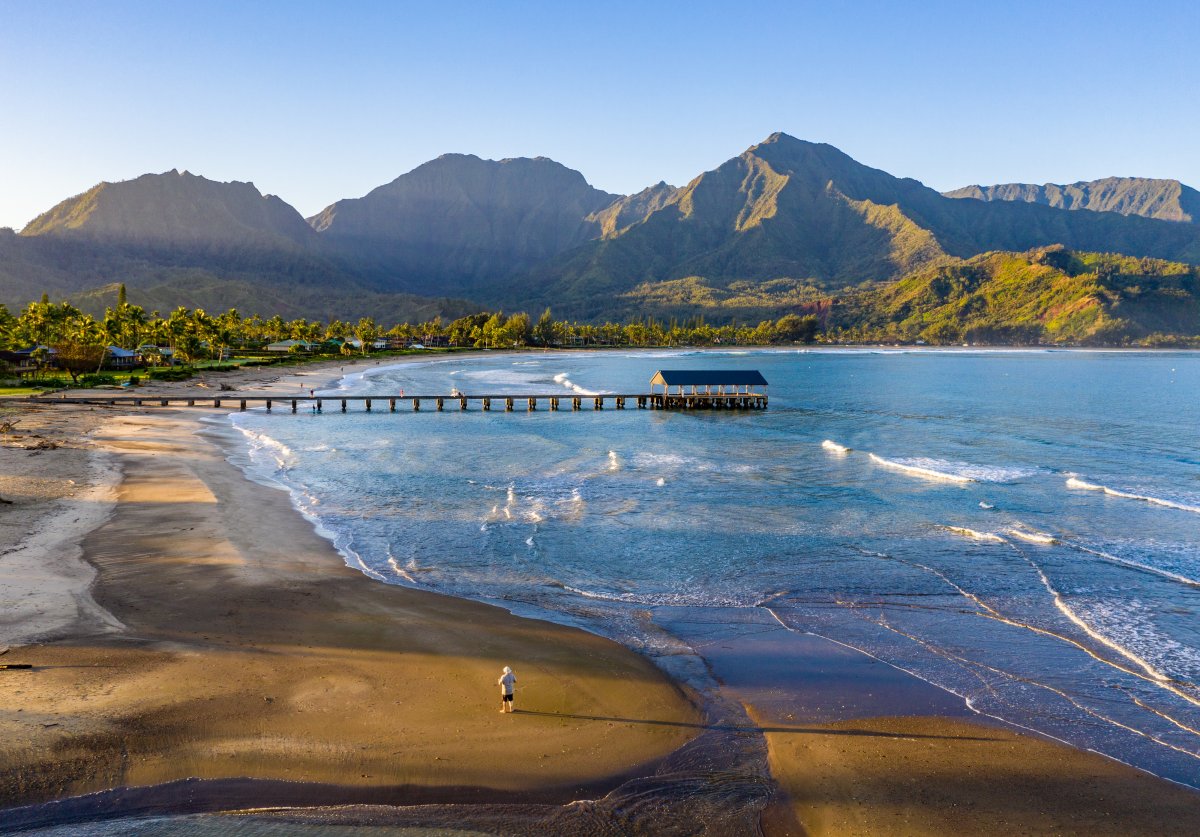
Many visitors stay in Poipu in the south and around Hanalei on the north shore. It's imporant to understand distances in order to plan accordinly. Here are the drive times from Poipu to the Port Allen & Hanalei.
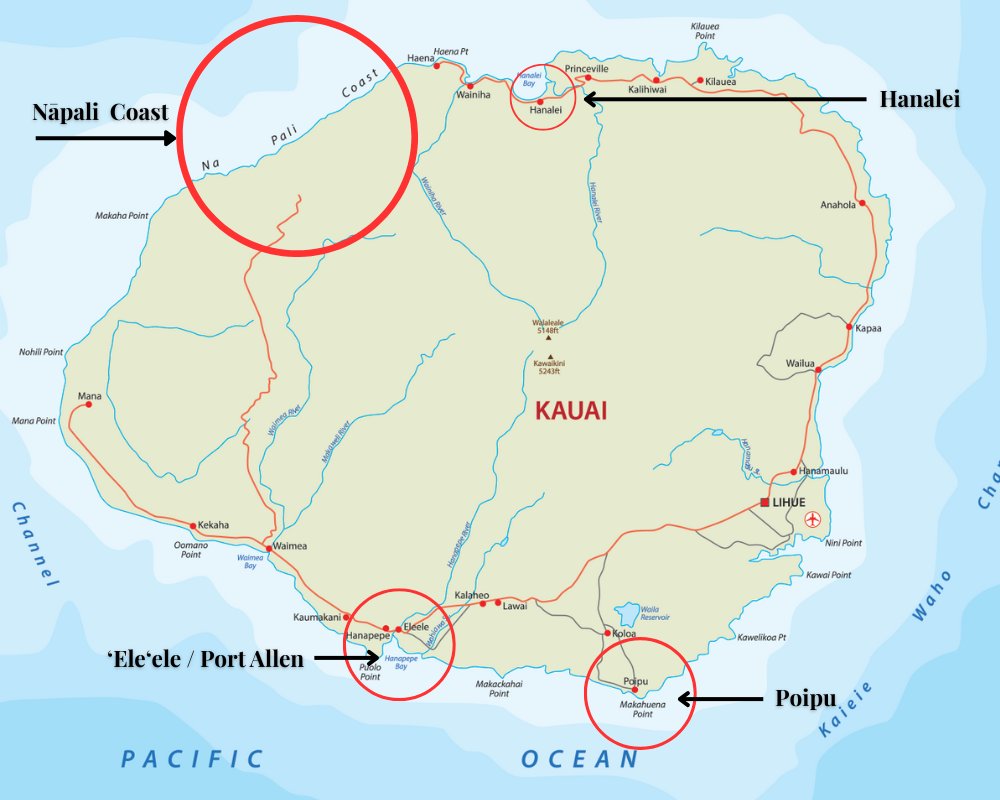
Basically, if you're staying on the north shore during the summer, Hanalei would be ideal. Otherwise, you're going to have to plan the drive down to Port Allen.
Poʻipū → Port Allen (ʻEleʻele)
- Distance: 16 miles (25 km)
- Average drive time: 25–30 minutes
Poʻipū → Hanalei (North Shore)
- Distance: 54 miles (87 km)
- Average drive time: 1 hour 45 minutes to 2 hours, depending on traffic and weather.
Practical Nāpali Coast Access Points (Do's & Don'ts)
- There's no road along Nāpali. Access is by boat, by air, or by foot via the Kalalau Trail, which begins inside Hāʻena State Park on the North Shore.
- Day hikers need Hāʻena entry/parking or shuttle reservations for the way out-and-back to Hanakāpīʻai; backpackers continuing beyond Hanakāpīʻai into Kalalau Valley must hold a Nāpali Coast State Wilderness Park camping permit (Read our Haena guide for visitors).
- Commercial drop-offs by boat at camping areas are not legal, and guided commercial camping is prohibited.
- A special note on Honopū, the ethereal twin coves split by a stone arch you'll recognize from films and postcards. Honopū is kapu (sacred) to the Hawaiian people, and no landings are allowed by boat, kayak, or aircraft. The only legal way to touch its sand is to swim from offshore or from neighboring Kalalau, both of which are difficult and dangerous; most guests admire it from a respectful distance on a boat tour.
- Some operators (with permits and when conditions allow) may offer a cultural landing at Nuʻalolo Kai, an ancient fishing village protected by sheer cliffs and a fringing reef; it's boat-access only and requires coordination with the state. If you see this option on an itinerary, it's a rare treat that folds living culture and archaeology into the sailing day.
A Short History of the Nāpali Coast - A Sacred Place for Native Hawaiians
For roughly a thousand years, Hawaiians lived, farmed, fished, worshiped, and traveled among Nāpali's valleys.
You can still see the legacy of these people, with stone-walled agricultural terraces in the valley bottoms where kalo (taro) once grew, foot trails that climbed thousands of feet between settlements, and remnants of temples and house sites in places like Nuʻalolo Kai. The landscape you sail past isn't just scenic, it's a cultural district written in rock, water, and wind.
Archaeological work at Nuʻalolo Kai shows continuous occupation for centuries, with fishing grounds protected by the reef and terraced sites tucked against the pali (cliffs).
Tours that earn permission to land typically include a guided walk past selected cultural features, an experience that helps explain how communities thrived in a place with no road access and limited arable land.
First Western Sightings & Early Writings
The first recorded European contact with Hawaiʻi occurred on January 20, 1778, when Captain James Cook anchored off Waimea, Kauaʻi.
Whether or not Cook's crew described the specific Nāpali cliffs in detail during that anchorage, his landfall marks the moment the island, and by extension its coast, entered Western charts and journals.
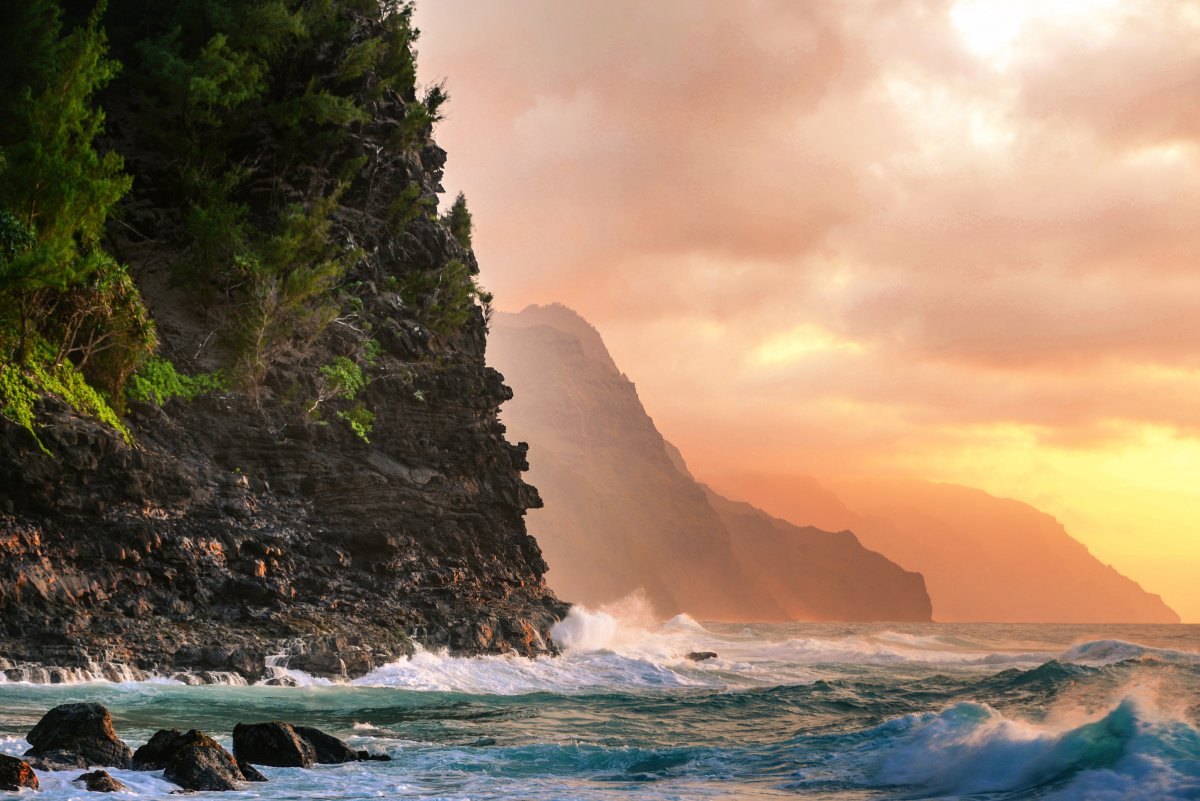
Some of the earliest descriptive writing about Nāpali's appearance comes a few decades later. In 1821, the missionary Hiram Bingham traveled along the coast in a double-hulled canoe and wrote:
"The mountains along the shore, for eight or ten miles, are very bold, some rising abruptly from the ocean… some, a little back, appear like towering pyramids… Into the nooks between them a few houses are crowded, but they are almost inaccessible, except from the sea."
It's a vivid sketch that still matches what you'll see today: verdant walls that soar straight from the sea, narrow pockets of sand beneath, and green spires that drive weather into their own microclimates.
Films Shot on the Nāpali Coast
Nāpali's fantastical look has starred in a surprising list of productions:
- King Kong (1976) used Kalalau Valley and Honopū for its primeval vistas, putting the coast's arch and coves on giant-screen display.
- Six Days, Seven Nights (1998) filmed sequences at Honopū Beach, leveraging the arch and cliffs for its adventure set pieces.
- More broadly, Kauaʻi's North Shore and Nāpali's adjacent locales appear in Jurassic Park / Jurassic World and Pirates of the Caribbean: On Stranger Tides, with fly-over and boat-level shots that telegraph "wild, unreachable island" in seconds.
What to Expect on an Average Sailing Day
From Port Allen, boats angle west past the low, sunny shore, then the cliffs start to build.
The water turns a deeper blue, spinner dolphins sometimes draft under the bow, and in winter, you might spot humpbacks blowing just outside the reef line.
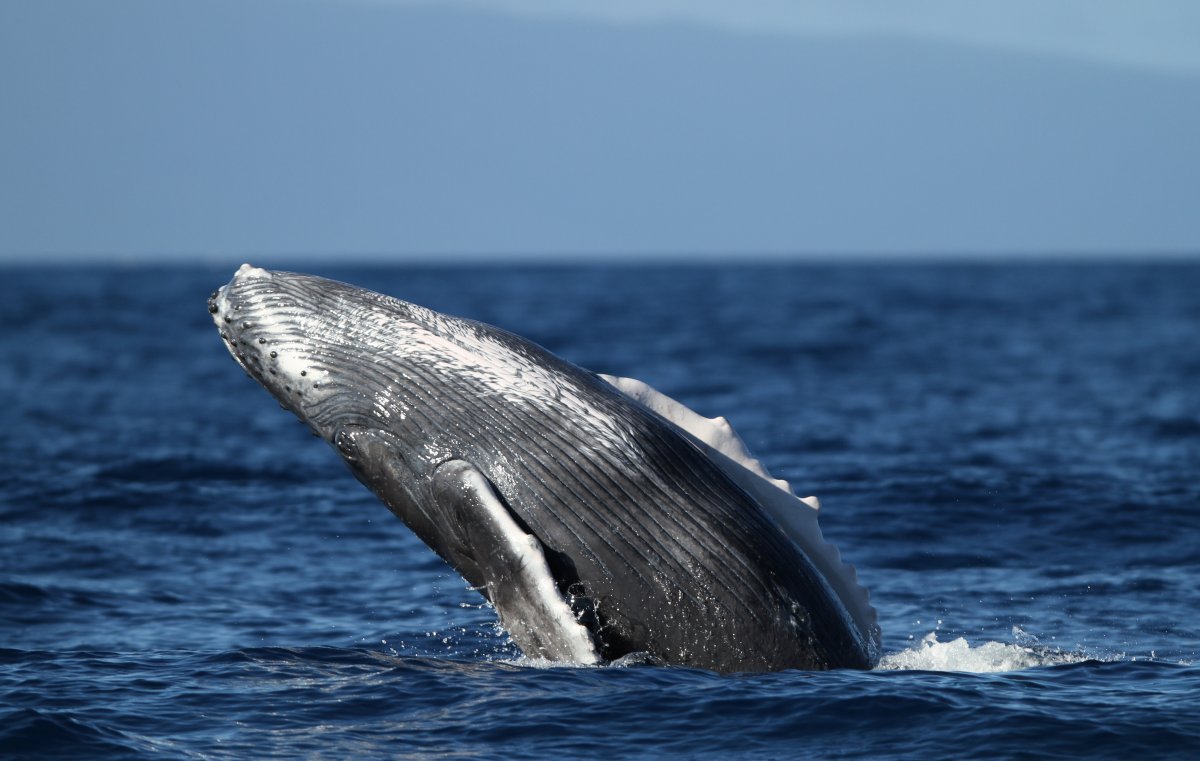
On summer days, captains tuck into coves for a snorkel stop, peering down at lava fingers colonized by corals, with green sea turtles cruising the reef.
You can expect strong winds when you come around the western edge of the island and make your way toward the Nāpali' Coast.
From Hanalei, the approach is shorter: you're in the shadow of the pali quickly, and when surface conditions are glassy, smaller boats are able to nose into sea caves for that half-light, echo-rich moment that photos never quite capture. (Whether any given cave or snorkel stop is possible is always up to ocean conditions.)
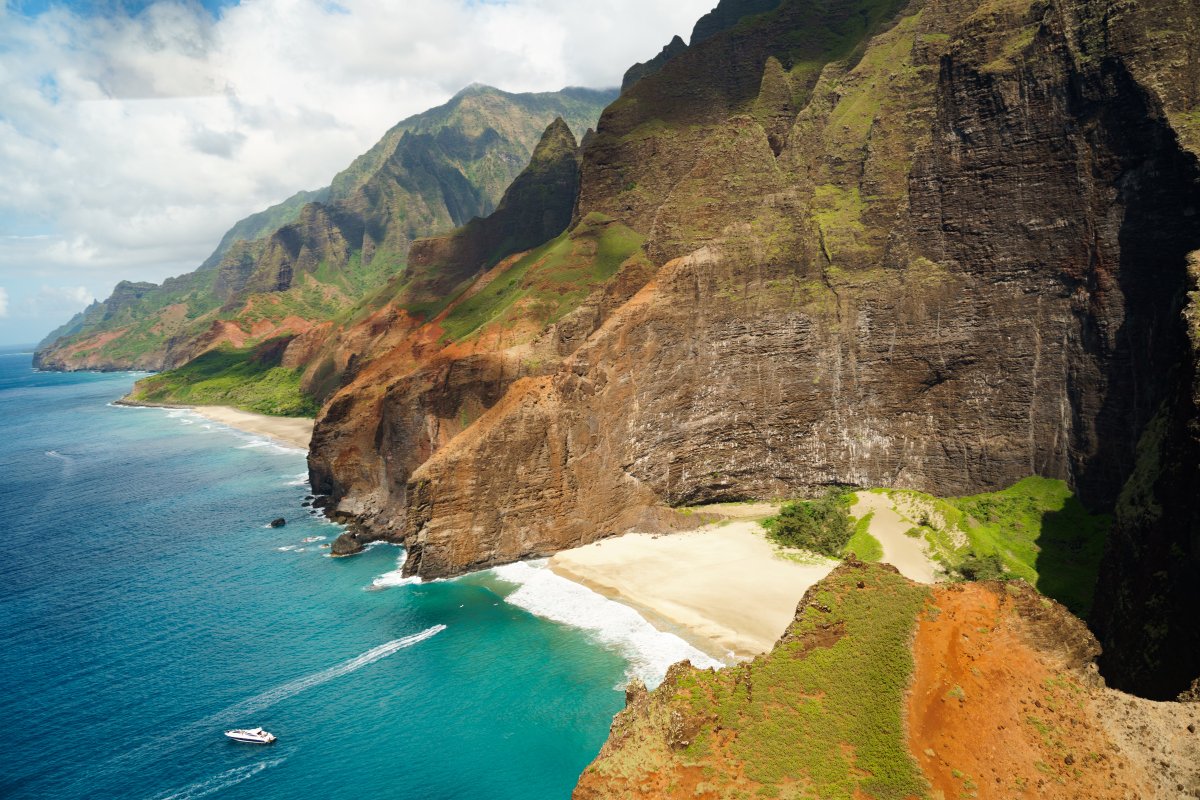
If your crew offers a landing at Nuʻalolo Kai, take it. With permits in place and conditions cooperating, you'll step ashore into a pocket of history ringed by cliffs, then walk a short interpretive loop where guides point out walls, terraces, and features that otherwise blend into the greenery. It's a chance to replace the postcard with place-based context.
Planning Tips at a Glance
Choose your departure by season. Port Allen is the dependable, all-season gateway, while Hanalei may be an option when North Shore swells mellow out (generally late spring through early fall).
- Book early in peak months; sunset sails, in particular, sell out fast. (Many operators post seasonal schedules and special departures online.)
- Know the rules. Hāʻena State Park requires reservations for day access; backpacking into Kalalau demands a camping permit, and commercial drop-offs/pickups for campers are illegal. No landings at Honopū—admire from the water.
- Expect the ocean to choose the itinerary. Sea caves, snorkeling, and even departure harbors can shift with conditions—trust your captain's call.
- Why sailing fits the spirit of the place
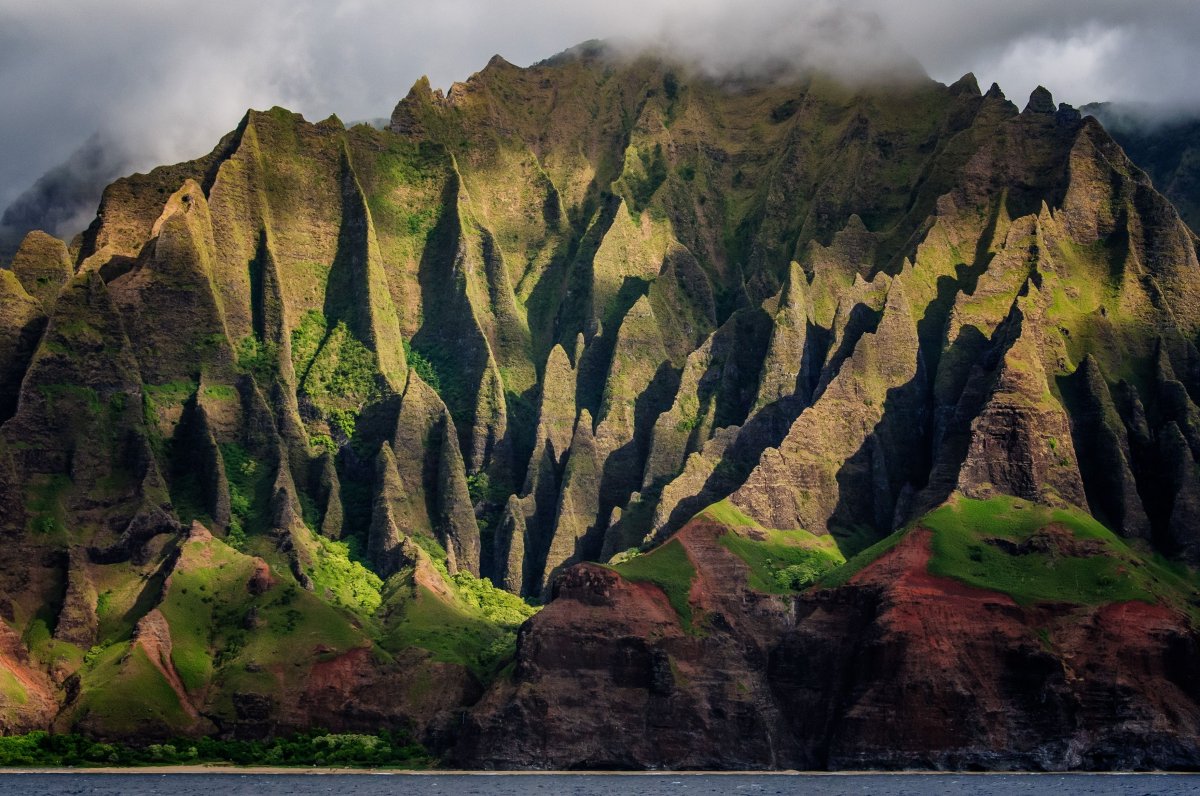
Nāpali's scale is humbling, and its history and cultural value best absorbed slowly. From Polynesian navigators to Bingham's canoe to today's eco-minded catamarans, the most respectful way to meet this coast has always been from the sea, and to leave it as you found it, so the next set of eyes sees the same wild line where mountain meets ocean.


